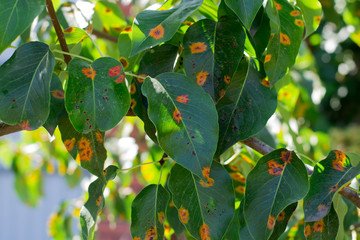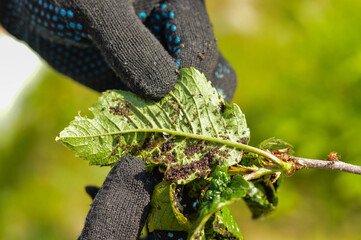Introduction
If you have trees on your property, you’ve probably worried at some point about diseases infecting them. Tree diseases can range from mild issues that just require some pruning to major problems that can kill the tree. As a homeowner, it’s important to know how to identify common tree diseases and determine the best treatment options. This guide will walk you through some of the most common tree diseases, symptoms to look for, and organic and chemical treatment methods. Knowing how to spot issues early and intervene with the right treatments can often save a treasured tree.

Common Tree Diseases
Some of the most widespread tree diseases include:
Anthracnose
This fungal disease causes leaf spots, blotches, and curling. It spreads rapidly in wet conditions. Affected trees show symptoms like browning, wilting, and early leaf drop. Anthracnose is common in shade trees like sycamore, oak, and maple. It can defoliate the tree, leaving it stressed and vulnerable. But healthy trees will usually recover after the fungus runs its course.
The emerald ash borer Utah has destroyed thousands of ash trees across the state. This invasive beetle lays eggs under the bark, and the larvae burrow into the trees’ vascular tissues. Infested trees exhibit canopy dieback and sprouting from the trunk. Woodpecker damage is also a sign. Emerald ash borers can kill untreated trees within 2-4 years. Quick treatment is needed to save ash trees once an infestation is noticed.
Verticillium Wilt
This soil-borne fungal disease gets into the vascular system of trees through the roots. It causes foliage to scorch, wilt, and die. Trees slowly decline over several seasons as the fungus spreads internally. Maple and smoke trees are especially prone to verticillium wilt. It’s important to plant trees in well-draining soil and avoid wounding the roots to lower the risk of this disease.
Also: How The Space Ecosystem Affects The World: What You Need To Know
Fire Blight
This bacterial disease impacts pear and apple trees. Oozing canker lesions weep a rust-colored “fire blight” ooze. It causes flowers, branches, and fruit to blacken like they were burned. Severe infestations can kill the tree. Fire blight spreads rapidly in warm, wet weather. Pruning out affected parts is critical to save the tree.
Treatment Options

If you suspect your tree has a disease, you have a few options to try to save it:
Organic Methods
- Prune out affected branches, limbs, and cankers to stop disease spread. Disinfect tools between cuts. Remove and destroy the debris.
- Improve air circulation and light penetration with selective thinning cuts. This keeps the tree dry. Proper spacing prevents overcrowding.
- Boost overall tree health with mulch and optimal watering. Healthy trees resist infection better. Deep watering encourages deep root growth.
- Apply neem oil spray to repel fungal diseases and insect pests. Use it as both a preventive and treatment.
- Use compost tea and nutrient sprays to enrich soil and strengthen roots. Fertilize trees in early spring.
- Plant resistant species and varieties. Some cultivars tolerate certain diseases better.
Chemical Treatment
- Fungicides containing chlorothalonil, myclobutanil, propiconazole, or copper sulfate may help cure fungal diseases if applied early. Follow label directions.
- Bactericides with streptomycin sulfate work against certain blights. Apply at first onset.
- Insecticides like imidacloprid can eliminate borers and other damaging pests. Use them preventively.
- Soil drenches of systemic chemicals reach the whole tree. Used judiciously, they help protect high value trees. Water in well.
Read More: Top 10 Energy Source Alternatives That Are Better for the Environment
Know When to Remove
If a beloved tree becomes severely infected, removal may be necessary. Warning signs include:
- More than 50% dead crown
- Major trunk/root damage
- Tree is a hazard risk with potential to fall
- Disease has resisted treatment after 2-3 seasons
Though saying goodbye to a tree is sad, removal stops disease spread to other trees. Plan to grind the stump and roots to prevent regrowth. Replant with a new, disease-resistant species in its place. Select trees suited for the site.
Conclusion
Paying attention to your trees and acting quickly after noticing symptoms of disease gives you the best chance of saving them. Both cultural practices and chemical treatments can be useful tools. With proper care and vigilance, your trees can continue gracing your landscape for years to come. Keeping trees healthy is an important part of maintaining your property’s beauty and value.






[…] Also: Treating Diseased Trees: A Guide for Homeowners […]